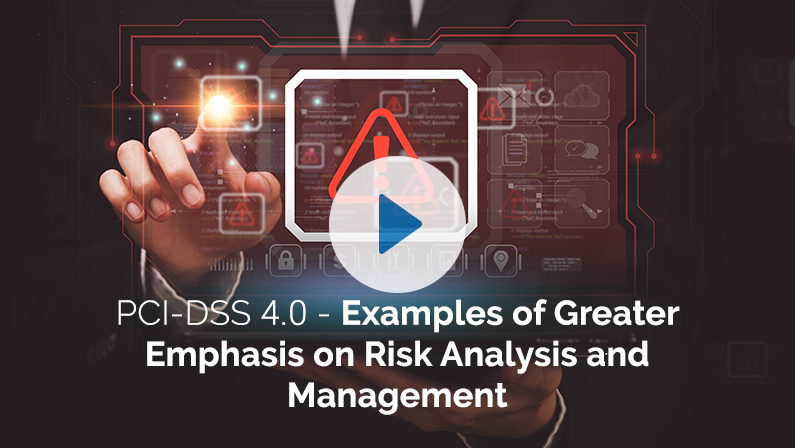- Emphasis on Risk Analysis and Management
The greater emphasis on risk analysis and management in PCI-DSS 4.0 underscores the importance of identifying, assessing, and mitigating risks associated with the storage, processing, and transmission of cardholder data. Here are specific examples illustrating how organizations can implement these enhanced risk management practices:
Example 1: Comprehensive Risk Assessments
Implementation Strategy: Conduct comprehensive risk assessments at least annually or upon significant changes to the environment. This involves identifying potential threats and vulnerabilities that could impact the cardholder data environment (CDE) and evaluating the likelihood and impact of these risks. Organizations can use frameworks like NIST SP 800-30 for guidance on conducting risk assessments.
Example 2: Tailored Risk Mitigation Plans
Implementation Strategy: Based on the risk assessment findings, develop and implement risk mitigation plans that are tailored to the specific risks identified. This could include deploying additional security technologies, enhancing monitoring, capabilities, or revising policies and procedures. This mitigation strategies should prioritize risks based on their potential impact on the CDE.
Example 3: Integration with Business Processes
Implementation Strategy: Integrate risk management processes into business decision-making and project management lifecycles. Ensure that new projects, technologies, or business processes are evaluated for their impact on the security of cardholder data and that risk management is an ongoing consideration throughout the project lifecycle.
Example 4: vendor Risk Management
Implementation Strategy: Establish a vendor risk management program to assess and monitor the security practices of third-party service providers who have access to or could impact the security of the CDE. This includes conducting due diligence before engaging vendors, requiring vendors to adhere to PCI-DSS requirements, and regularly reviewing vendor security practices.
These examples illustrate the PCI-DSS 4.0’s shift towards a more dynamic and integrated approach to risk management, emphasizing the need for organizations to continuously identify, assess, and mitigate risks in the context of the evolving threat landscape and business environment. This proactive approach to risk management is critical for protecting cardholder data against current and emerging threats.





